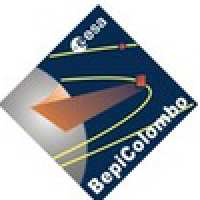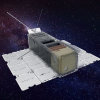The space missions the group is involved with and the data these missions provide are central to the research interests of the group. Instrumentation designed and built by the group is currently exploring many corners of our solar system.
Imperial College Space Missions
- Current Operational Space Missions
- Post-Operational/ Continuing Exploitation
- Missions Under Development
- Missions Under Study
| Solar Orbiter |  |
ESA's Solar Orbiter spacecraft orbits the Sun in the inner heliosphere, taking pictures of the solar atmosphere and measuring the local solar wind |
| Cluster |  |
Cluster is a scientific mission of ESA to study the space environment of the Earth |
| BepiColombo |  |
An ESA mission to explore and study the space environment of Mercury |
 |
JUICE will carry out an in-depth study of the Jovian system and its four largest satellites, with particular emphasis on Ganymede and Europa. Imperial is leading the J-MAG magnetometer. |
| RadCube |  |
RadCube was a CubeSat In-Orbit Demonstration mission led by C3S (Hungary) under the auspices of the European Space Agency. Imperial provided the MAGIC (MAGNETOMETER from Imperial College) a miniaturised magnetoresistive sensor, as part of the RadMag payload led by EK (Hungary). The sensor was mounted on a boom provided by Astronika (Poland). |
| Cassini-Huygens |  |
A joint NASA/ESA mission to Saturn and Titan |
| Double Star |  |
Joint European Space Agency (ESA) and Chinese Mission to explore the Earth's magnetosphere |
| Ulysses |  |
ESA's mission to study the heliosphere flying over the poles of the Sun |
| Venus Express |  |
ESA’s first mission to our nearest planetary neighbour, Venus |
| Rosetta |  |
An ESA mission to rendezvous with comet 67P/Churyumov-Gerasimenko |
| Trio-Cinema |  |
A three spacecraft CubeSat mission to study Space Weather by making multi-point measurements of the magnetic field and energetic ions and electrons in near-Earth space and imaging ring current particles |
|
IMAP |
The Interstellar Mapping and Acceleration Probe (IMAP) is a NASA heliophysics mission that will simultaneously investigate the acceleration of energetic particles and the interaction of the solar wind with the local interstellar medium. The magnetometer instrument (MAG) is lead by Imperial College. |
|
ERSA |
The European Radiation Sensor Array is a space environment payload that will be hosted on the Lunar Gateway in orbit around the Moon. Imperial is contributing a MAGIC instrument to measure the magnetic field. |
|
HENON |
The HEliospheric pioNeer for sOlar and interplanetary threats defeNce (HENON) mission is a deep space CubeSat that will enter a distant retrograde orbit of the Sun-Earth system. In this orbit it will stay for a long period upstream of Earth (~ 0.1 AU). Imperial is providing a miniaturized MAGIC instrument to measure the magnetic field and demonstrate improved space weather warning times. |
|
HelioSwarm |
HelioSwarm, is a NASA heliophysics mission that will launch a constellation of 9 spacecraft to investigate the fundamental properties of plasma turbulence. The magnetometer instruments (MAG) are led by Imperial College. |
|
Comet Interceptor |
The Comet Interceptor mission will consist of three spacecraft and is ESA's first 'Fast Class Mission'. Imperial is part of the magnetometer consortium |
|
Vigil |
Vigil is the flagship ESA space weather mission that will provide real-time operational and scientific data about the space environment from the Sun-Earth L5 Lagrange point. Imperial leads the consortium providing the magnetometer. |
Missions under study:
| Elfen | Elfen is a mission to reveal the heavy-ion composition of the Earth's magnetosphere, to better understand the physics that controls the structure and dynamics of the near-Earth space environment. Imperial leads the development of a magnetometer instrument for Elfen and contributes to the development of the science case. |